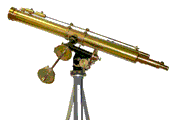Department of Physics and Astronomy: Publications and Other Research
Date of this Version
1978
Abstract
Absolute doubly differential cross sections for secondary electron production by electron impact have been measured for static gas targets of neon, argon, hydrogen, and nitrogen. Electron impact energies were from 100 to 500 eV. An electrostatic analyzer was used to analyze secondary electrons with energies between 4 eV and the primary electron energy minus the first ionization potential of the target. Angles of emission were 10° to 150°. The present data agree well with the data of Opal, Beaty, and Peterson at 90° but, as was observed previously for helium, the agreement becomes increasingly poorer for larger and smaller angles. This angular disagreement, which is independent of target gas and impact energy, is approximately given by a+(1-a) sin θ, where a=0.10±0.12. Previously we compared the experimental data of Opal, Beaty, and Peterson with calculations by Manson for helium and obtained a similar correction but with a=0.53. Recent Born-approximation calculations of Manson are compared with our 500- eV argon data. The calculations reproduce the angular distributions of the measured cross sections quite well for small secondary-electron energies. For intermediate energies the agreement is still quite good near the momentum-conservation peak but poorer for large scattering angles.


Comments
Published in Physical Review A 17, 843 - 848 (1978).
©1978 The American Physical Society
URL: http://link.aps.org/doi/10.1103/PhysRevA.17.843
DOI: 10.1103/PhysRevA.17.843